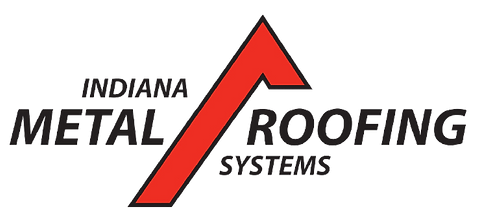Winter Wisdom: The Importance of Proper Roof Ventilation
- Joseph Justice
- Jan 1
- 3 min read
As winter blankets your home with snow and cold air, keeping your house warm and energy-efficient is often a top priority. However, one crucial factor that many homeowners overlook is the importance of proper roof ventilation. At Indiana Metal Roofing Systems, we understand that good ventilation plays a key role in protecting your home during the colder months. Here's why ensuring your roof is adequately ventilated in winter is essential for your home's long-term health and efficiency.

Why Proper Roof Ventilation Matters in Winter
1. Moisture Control
During the winter, moisture buildup is one of the most common issues homeowners face. Warm air from inside your home rises and enters the cold attic, where it can condense into water droplets. Over time, this condensation can lead to mold, mildew, and even wood rot. Proper roof ventilation allows moist air to escape, helping to keep your attic dry and preventing long-term damage.
Did You Know?Mold and mildew caused by moisture buildup can damage insulation, reducing its effectiveness and leading to higher energy bills.
2. Ice Dam Prevention
Ice dams are a significant winter hazard for homes in snowy regions. They form when snow on the roof melts from heat escaping your attic and refreezes at the eaves, where the roof is colder. This creates a dam of ice that can block further melting snow from draining off the roof, potentially causing leaks and water damage. Adequate roof ventilation keeps the attic and roof at a consistent temperature, preventing the formation of ice dams.
3. Energy Efficiency
Many homeowners mistakenly believe that roof ventilation causes heat loss in the winter. In reality, proper ventilation improves energy efficiency. By maintaining a balanced attic temperature, roof ventilation helps to prevent the excessive buildup of heat, which can lead to an overworked heating system. This ensures that your home stays warmer while using less energy.
4. Prolonging Roof Lifespan
Winter weather, especially in Indiana, can be tough on your roof. Fluctuations in temperature, combined with snow and ice, can cause roofing materials to expand and contract. Without proper ventilation, this can lead to structural damage over time. By regulating attic temperatures and reducing the stress placed on roofing materials, good ventilation helps extend the lifespan of your roof, saving you money on future repairs or replacements.
Practical Tips for Ensuring Proper Winter Roof Ventilation
1. Inspect Existing Ventilation
Before winter hits, it's essential to check that your roof’s ventilation system is working correctly. Ensure that vents are clear of debris and blockages, allowing air to flow freely through the attic. Proper airflow is key to preventing moisture buildup and regulating temperature.
2. Seal Gaps and Leaks
Sealing any gaps in your attic helps prevent warm air from escaping into the space and creating condensation. This improves energy efficiency and reduces the likelihood of moisture-related issues.
3. Add Ridge and Soffit Vents
Consider installing ridge and soffit vents if your home doesn't already have them. These vents work together to create a continuous airflow through the attic, allowing warm air to escape while pulling in fresh air from outside. This keeps the attic at a more consistent temperature and prevents many of the common winter roofing issues.
Conclusion
While winter may be a time to focus on indoor warmth and comfort, your roof also needs attention. Ensuring that your roof is properly ventilated during the cold months is essential for maintaining your home's structural integrity, preventing moisture damage, and improving energy efficiency. At Indiana Metal Roofing Systems, we specialize in roofing solutions that help protect your home all year round, and we are here to ensure your roof is ready for winter.
Frequently Asked Questions (FAQs)
1. Why is roof ventilation important in winter?
Roof ventilation prevents moisture buildup and ice dams, improves energy efficiency, and prolongs the lifespan of your roof.
2. Can poor ventilation cause damage to my roof?
Yes, poor ventilation can lead to moisture accumulation, mold, and damage to the roof structure, ultimately shortening the lifespan of your roof.
3. Do I need roof ventilation if I have good insulation?
Yes, even with proper insulation, roof ventilation is crucial to prevent condensation and temperature imbalances in your attic.
4. What are the signs of poor roof ventilation?
Common signs include excess moisture in the attic, mold or mildew growth, ice dams, and higher energy bills in the winter.
5. Can roof ventilation reduce energy bills?
Yes, proper roof ventilation helps maintain a balanced attic temperature, reducing the strain on your heating system and lowering energy bills.
For more insights on protecting your roof from the elements, click here to explore common myths about metal roofs and lightning.


Comments